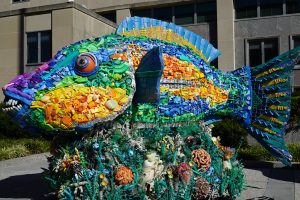How Can Humans Mitigate Plastic Waste?
In order to mitigate the state of sea turtles, specifically through reducing plastic waste, we must understand umwelt to help us heighten our empathy toward the creatures. We must also practice engaged pluralism to facilitate the consideration the impacts on all stakeholders (Finska, et. al). The reduction of single use plastic containers will require the advent of alternative packaging for a vast array of products, which depending on the new, “eco-friendly” packaging, could cause the cost of products to increase, making them less accessible to lower socio-economic groups (Finska, et. al). This not only hurts the consumer, but the producer as well, by inviting the possibility of reduced sales. However, if consumers are better educated, they can make informed choices about responsible ways to spend their money, thus forcing companies to change their practices to ones that are more sustainable (Farrell). A large piece of the road to mitigation involves consumer choice which stems from environmental awareness. Environmental awareness can be achieved in a variety of ways, such as art created through found objects that raises awareness to the sheer amount of plastic in our oceans.

This sculpture of a parrot fish is built from plastics found in the ocean. It represents the sheer amount of plastic waste that exists and the way it is consuming marine life.
Another powerful tool to help with the mitigation of plastic consumption is through policy. Policies can be implemented to improve the systems that handle plastic waste (recycling / landfill facilities) put constrains on plastic usage, or ban plastics all together. Policy is extremely powerful, but also complex (Finska, et. al). It has had wide success limiting the use of plastics in other countries, but takes a long time to formulate, agree upon, implement (Finska, et. al).